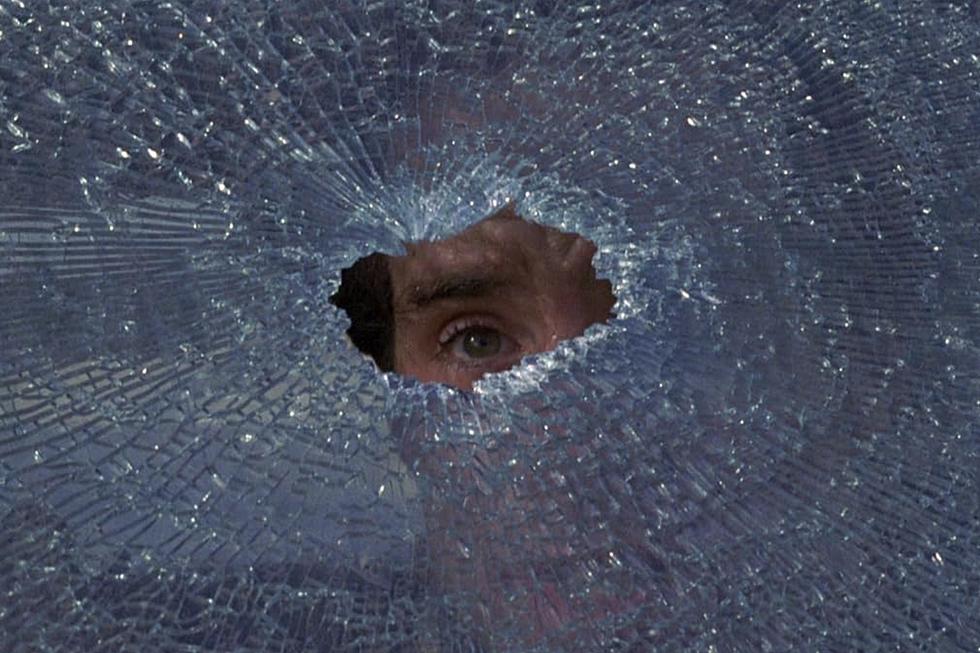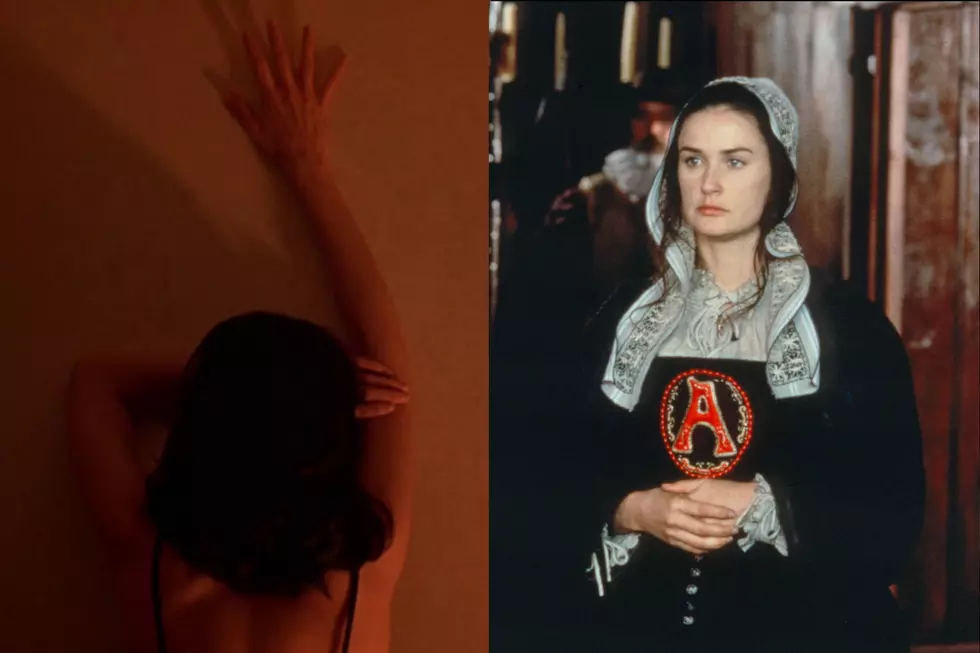
‘To Live and Die in L.A.’s Car Chase Is a Masterpiece Because It‘s Way More Than Just a Car Chase
It’s 1985, and director William Friedkin has just about finished production on his latest cop thriller, To Live and Die in L.A. With principle photography winding down, there’s only one thing left to shoot: A car chase sequence that would provide a crucial boost of adrenaline to the movie’s final act.
Friedkin was no stranger to car chases. In 1971, Friedkin directed another cop thriller called The French Connection. Its key set piece was a dynamic and nail-biting chase scene featuring a police detective (played by Gene Hackman) racing to catch a crook who is making a getaway on an elevated subway train.
There had been great car chases before The French Connection, but few combined different modes of transportation, fluid editing, and amazing real-world photography (captured on actual New York City streets) the way Friedkin did in The French Connection. To try to top The French Connection was a fool’s errand at best, and madness at worst. It would be like Michelangelo looking at The Creation of Adam and going “Eh, I can paint a better ceiling than this.”
When Friedkin brought the idea of a major chase sequence to To Live and Die in L.A. stunt coordinator Buddy Joe Hooker, he did so with a warning:
Come up with something better than what was in The French Connection, or it will be cut from the film.
Fortunately and impressively, what Friedkin, Hooker, and their team came up with for To Live and Die in L.A. absolutely equaled The French Connection chase — and in some ways surpassed it. Because the chase in To Live and Die in L.A. isn’t just an exciting moment, it is essential to understanding the film’s themes and characters.
READ MORE: The Most Mind-Blowing Long Takes in Movie History
Although the chase sequence wound up consuming less than 10 minutes of screen time in the final movie, Friedkin and Hooker spent six weeks painstakingly staging and shooting it. In Counterfeit World, a documentary on the making of To Live and Die in L.A., William Petersen — who stars in the film as obsessive, reckless Secret Service agent Richard Chance — the crew for the chase was a fraction of the size one would expect on such a monumental undertaking.
“[There were] no trucks coming with us. No wardrobe, no makeup,” Petersen recalled. “It was 40 stunt guys, Friedkin, [co-star John] Pankow, and me. We were going all over L.A. blocking off streets and just spinning out.” In Counterfeit World (which you can watch below), Friedkin explains his approach to shooting chase scenes:
You don’t need a lot of people to shoot a chase. Because when you’re shooting a chase, it’s one shot at a time. Maybe with multiple cameras from different angles, but one shot at a time.
The finished chase is a blend of careful planning and improvisation. On the one hand, Hooker meticulously blocked out the positions of the cars and cameras for each key element of the chase, which starts in a seedy Los Angeles warehouse district, darts past a speeding train, transitions into one of L.A.’s canals, and then climaxes on a freeway, where the heroes attempt to speed away from the bad guys by driving the wrong way into oncoming traffic. (Counterfeit World includes reproductions of Hooker’s diagrams.)
In between the planned moments, Friedkin kept adding new elements he’d think of on set. Friedkin’s big idea for the sequence — the one he thought could eclipse his prior work in The French Connection — was the image of a car driving the wrong way down a bustling freeway. But Friedkin wasn’t sure how to get the characters moving onto the highway in the wrong direction. In Counterfeit World, you see Friedkin have the lightbulb moment in real time, as he explains to Petersen that if they add a whole batch of additional cars to the chase, his character will have no choice but to take an off-ramp onto the freeway.
Although nominally similar to the chase in The French Connection, To Live and Die in L.A.’s sequence is also different from Friedkin’s earlier masterpiece in several crucial ways. For one thing, the cops are not the pursuers this time around; they are the ones being chased all over industrial L.A. The key characters are Petersen’s Chance and Pankow’s Agent Vukovich. As To Live and Die in L.A. begins, Chance’s aging partner is murdered by a brilliant counterfeiter named Rick Masters (Willem Dafoe). Chance’s partner was days from retirement; now he’s dead. Chance tells Vukovich — his young, new, by-the-book partner — that he will take down Masters, and he doesn’t care how he does it.
True to his word, Chance quickly breaks more laws than Masters, who is violent and ruthless but only kills to protect his business. Chance blackmails a paroled woman into giving him information (and into sleeping with him), then bullies his boss into letting him take one of Masters’ associates (played by a very young John Turturro) out of custody. Then Chance loses the associate, and doesn’t even attempt to get him back because that would distract him from his investigation into Masters. Eventually, Chance’s sleazy tactics land him a meeting with the counterfeiter. Disguised as a doctor with banking interests in the Cayman Islands, Chance convinces Masters to print him a huge batch of phony money in exchange for $30,000 in authentic bills.
When the Secret Service won’t authorize that big of a payout to Chance, he proposes a ludicrously bad idea: Operating on a tip, Chance and Vukovich will hold up a man arriving in L.A. with $50,000 to buy some smuggled diamonds. This, Chance argues to Vukovich, is not a theft, because by taking this money they are actually preventing a crime. They will then use this pilfered money to catch Masters red handed.
It’s a bad plan, and it goes even worse than expected. Chance and Vukovich grab the bag man and find the $50,000, only to be shot at by heavily armed goons. The bag man is killed in the crossfire, and Chance and Vukovich make a hasty getaway — the start of this all-important chase sequence.
Friedkin and Hooker’s camera placement and cuts are clear and exact, and the stunt driving — much of it performed by Petersen himself — is visceral and kinetic. As a nine-minute YouTube clip, it’s an awesome, dynamic sequence. In context in To Live and Die in L.A., the chase is also the moment when the audience realizes just how far Chance will go to catch Masters — and how the life of a Secret Service agent has so thoroughly broken this man’s soul.
For example, Friedkin’s spontaneous decision to send Chance and Vukovich’s car up an off-ramp is a perfect moment of show-don’t-tell character revelation. Sure, going the wrong way on an L.A. freeway is a great setup for vehicular chaos. But watch how Friedkin stages that moment at 7:00 of the clip above. Chance doesn’t make an impulsive mistake; he stops his sedan, and stares at two road signs reading “WRONG WAY” and “DO NOT ENTER.”
Chance makes his choice and slams on the gas — because that is what his character does in every situation. He barrels headlong into danger, doing things in the exact opposite direction from what is safe and lawful. He is always going the wrong way, into places he shouldn’t, ignoring all warning signs.
Over and over in To Live and Die in L.A., Friedkin uses precise framing and editing to reveal ideas and themes. Look at the shot below, for example, which comes during key sequence late in the film when Chance finally tracks down Turturro’s escaped crook. By this point, Chance has proved he will break any rule or law to achieve his goals; he’s arguably just as bad as the “bad guys” he’s tasked with apprehending. Shooting the scene this way, with Petersen and Turturro on either side of a thin wall, treats Chance and his target like mirror images; two sides of the same coin.
In interviews, Friedkin was humble about his work; refusing to call it art, steadfastly denying his movies were on par with the pictures of direectors he revered like Orson Welles or Fritz Lang. But To Live and Die in L.A. shows Friedkin for the master of this story of visual storytelling that he was. It wasn’t just that he knew how to stage a chase scene. He also knew how to tell a story with one.

The 10 Most Ridiculous Tropes In Action Movies
More From ScreenCrush









